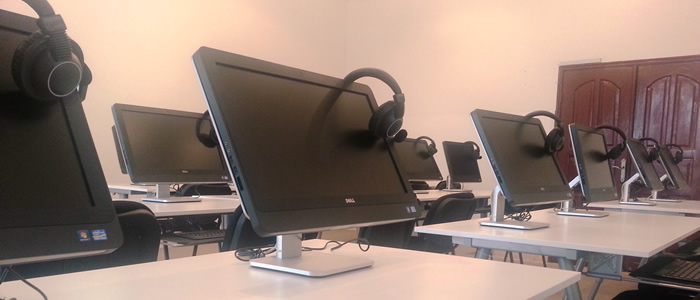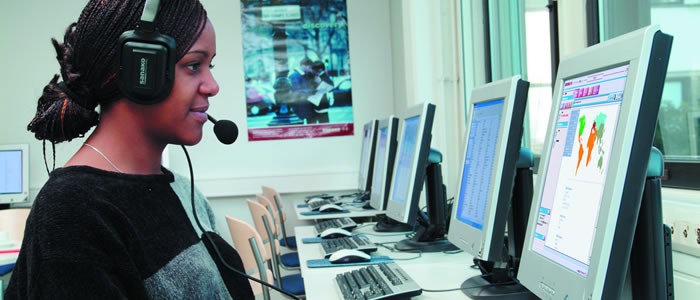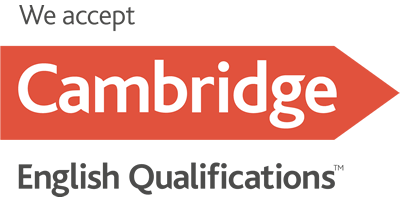Why use a language lab in language teaching?
In an average foreign-language class, all students combined speak only 23.5% of the class time.
In a 45-minute long class 23.5% equals approximately 10 ½ minutes. As this number is the speaking time of all students put together, the time each student gets to practice speaking becomes less as class size is increased.
Look for example how much speaking practice each student gets during a 45-minute foreign-language class, depending on class size:
| 10 students class | 30 students class | |
| Traditional classroom – students speak for: | ~1 minute | ~21 seconds |
| Classroom with language lab – students speak for: | ~11 minutes* | ~11 minutes* |
With a language lab, all students in the class can speak simultaneously without distracting each other regardless of the class size. Without a language lab, in a class of more than 10 students, each student gets less than one minute of speaking practice.
*Note: actual speaking time per student can be considerably higher depending on what type of exercises teacher conducts.
Sources:
Vanderplank, Robert; 2009; Deja vu? A decade of research on language laboratories, television and video in language learning; Cambridge University Press
- DESI; 2006; German Institute for International Educational Research
- Davies, Graham; Bangs, Paul; Frisby, Roger; Walton, Elizabeth. 2005. Setting up effective digital language laboratories and multimedia ICT suites for MFL. CILT, The National Centre for Languages and the Association for Language Learning
Connie’s Academy Language Lab
The language laboratory is very useful for assessing students' speech. It provides students with the technical tools to get the best samples of pronunciation of the language. The electronic devices used in the laboratory will stimulate the eyes and ears of the students to acquire the language quickly and easily. The laboratory’s collection is designed to assist learners in the acquisition and maintenance of aural comprehension, oral and written proficiency, and cultural awareness. The language laboratory offers broadcasting, television programmes, web-assisted materials and videotaped off-air recordings in the English language.
In short, a student can get the experience of having interaction with native speakers through the laboratory. Hence, the language laboratory has become the best tool in any language learning process for communication. Not all 16 students who use the lab need to train at the same level of the language or even the same language, as the teacher can divide the pool of 16 students into 3 groups, with each group capable of learning a different level of the same language or even a different language.
Connie’s Academy fully equipped lab with 16 student computers are state of the art and each has installed the Sanako software, the global leader in modern language labs and language teaching software.
What does all this mean?
It means increases in rates of success in learning a language for company employees, students at a school or university, for travellers to English speaking countries seeking employment, a better life or adventure.
If you’re an individual, learning English means it’s easier for you to travel to the major English speaking countries of the World, the USA, Canada, England, Australia and New Zealand.
If you’re an employee adding the world’s business language to your skill sets means you stand out, giving you the added confidence to succeed and advance.
If you’re a company it means an increase in productivity, either because your employees are back at work sooner or because their success at your workplace is your success.
If you’re an educational establishment it means your students are going to succeed faster, your pass rates at exams are going to increase radically and your costs of training reduces.













